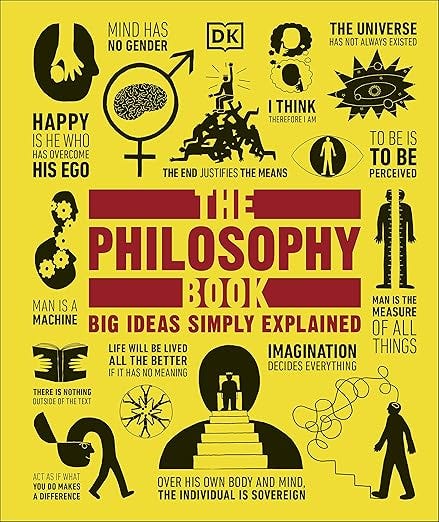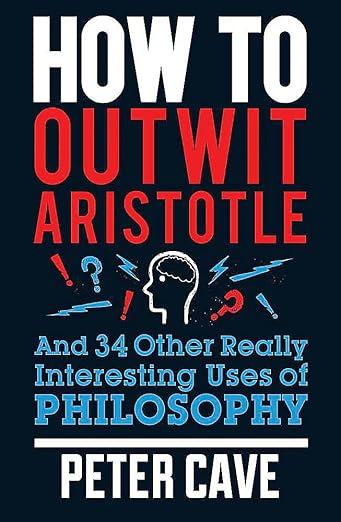July 2024 | Athera's Odyssey: Pioneering Perspectives
From building sustainable AI businesses to exploring computing frontiers: explore the pioneering perspectives shaping India's tech landscape.
In this month’s edition of Athera’s Odyssey, we cover
Portfolio Perspectives: We explore how seasoned entrepreneur, Rajeev Pathak, is going about building his latest venture
Ecosystem Stories: In conversation with Amith Singhee, Director, IBM Research India on the country’s computing future.
Pathways: This month in Pathways, we’re delving deep into the mind and the meaning of life with philosophy and psychology recommendations.
Athera Almanac: To be updated soon.
Portfolio Perspectives: Hyperbots
The world of technology is going through a Cambrian explosion of new-age applications courtesy of AI. However, as with evolution, only a handful of well-adapted solutions will stand the test of time and thrive. In this light, we wanted to explore the business and strategy of one of our newest portfolio companies, Hyperbots.
We believe the Hyperbots approach will prove a useful case study for aspiring entrepreneurs looking to differentiate themselves using cutting-edge technology in a crowded space. Co-founded by Rajeev Pathak, Niyati Chhaya, and Ram Jayaraman. Rajeev is a veteran with over two decades of experience in building technology products, Hyperbots represents a convergence of deep industry insight and state-of-the-art AI applications to disrupt one of the most cognitively complex and integral functions of any enterprise: finance.
The Genesis of Hyperbots
The Hyperbots' journey began with Founder’s reflections on their previous ventures, including Ram and Rajeev’s experiences at Funtoot, and Niyati’s experience at Adobe. Founders believe three key insights from his experience have shaped Hyprbot's direction:
The necessity of targeting global markets for enterprise SaaS success
The critical importance of delivering tangible, measurable benefits to customers
The enduring value of robust intellectual property in creating market differentiation
These learnings led Rajeev, Niyati, and Ram, to identify finance and accounting as a sector ripe for AI-driven transformation.

The team recognized that while AI was making waves across industries, its application in enterprise finance remained largely untapped, especially in handling unstructured data and automating intelligent tasks.
Why Finance?
Rather than creating a broad, horizontal AI platform, the company zeroed in on areas where unstructured data dominates the execution of manual tasks. This strategy emerged from extensive research and discussions with dozens of CFOs and finance professionals across sectors to identify and address real-world pain points. Three critical areas of importance emerged:
Accounts Payable (AP): Automating invoice processing, matching, and payment decisions
Accounts Receivable (AR): Streamlining invoice generation, follow-ups, and cash flow management
Expense Processing (EP): Simplifying expense claim submissions and approval

By tackling these areas, Hyperbots wanted to deliver significant improvements in operational efficiency. For instance, in AP processes, the company targets up to 80% straight-through processing of invoices – a game-changer for finance departments dealing with thousands of documents every month.
How AI helps
At the heart of Hyperbots' offerings lies a suite of custom-built finance and accounting LLMs and models tailored for finance and accounting tasks. The company has developed domain-specific language models that can understand and process financial documents with high accuracy. This goes beyond simple text extraction, incorporating complex tasks like
Interpretation of text including augmentation into 100+ possible fields from finance documents like invoices, POs, and receipts.
AI led Identification, booking, and reversal of accruals
AI-led Tax verification and compliance checks
Intelligent payment decisions based on various factors including cash position and vendor relationships
Predictive analytics for cash flow management
The development of these models represents a significant investment in R&D and underscores Hyperbots' commitment to building proprietary technology. By combining classical machine learning techniques with state-of-the-art models the company is creating solutions that are not just innovative but also practical and immediately applicable in enterprise settings.
Building Trust in AI
Rajeev and his entire team of experienced professionals realized that there is one unchanging factor that determines whether a customer will buy your product or not: trust. This is all the more critical in near-zero error tolerance functions like finance. Recognizing the critical nature of financial operations, Hyperbots has designed a three-stage implementation process to build trust in its AI solutions:
Trial Period: Allowing clients to test the system without full commitment for a period that allows them to explore the solution throughout the entire process cycle
Human Review Phase: All AI decisions are reviewed by humans to ensure accuracy and build confidence
Selective Oversight: Educating how AI handles routine tasks while flagging anomalies for human review
This approach is designed to reflect a deep understanding of the importance of accuracy and control in financial processes, addressing potential concerns about AI reliability in critical business functions. Along with the above Hyperbots' solutions are designed to deliver concrete, measurable benefits:
Upto 90%+ reduction in process costs for finance operations
Upto 30% reduction in Days Sales Outstanding (DSO) for accounts receivable
Reduction in overspending in expense processing
10% -30% improvement in cash outflows.
As Hyperbots continues to evolve, the company is setting its sights on expanding its suite of AI assistants to cover more finance and accounting processes. The vision is to become a comprehensive AI solution for finance departments, handling everything from accounts payable to financial planning and analysis.
Building new solutions in an old market
In a landscape dominated by conventional ERP providers, Hyperbots is distinguishing itself through:
AI-native solutions built specifically for mid-market enterprises ensure a large enough market without stretching its marketing and sales resources
Comprehensive coverage of finance use cases focussed on end users (the finance team) built with insights from team leaders (CFOs)
Superior accuracy and lower compute costs through focused ML development
Rapid deployment helps potential customers to “Try-Buy” within weeks compared to lengthy System Integration projects that may take months to get going
Pre-integration with major upstream and downstream applications to ensure there are little to zero switching costs for enterprises
Hyperbots' journey also highlights broader trends in enterprise AI adoption. By focusing on tangible benefits and measurable outcomes, the company is demonstrating how AI can move beyond hype to deliver real value in specific business contexts.
For us, Rajeev and his team represent a new breed of AI companies – ones that combine deep domain expertise with cutting-edge technology to solve specific, high-value problems. As businesses increasingly look to AI for operational efficiency and strategic insights, companies like Hyperbots are poised to play a crucial role in shaping the future of business operations.
Ecosystem Stories with Amith Singhee
In the bustling landscape of India's tech revolution, few voices resonate with the clarity and vision of Amith Singhee. As the Director of IBM Research India and CTO of IBM India/South Asia, Amith stands at the intersection of cutting-edge research and real-world application. His journey from electrical engineering to the forefront of AI and quantum computing mirrors India's technological evolution.
Athera had the privilege of sitting down with Amith to explore the exciting frontiers of computing in India. What unfolded was a conversation that painted a vivid picture of India's potential to lead in the age of AI and quantum computing.
The Shifting Sands of Computing
Athera: Amith, you've been in the computing field for over 16 years now. How have you seen the landscape change, both in terms of technology and its impact on business?
Amith: The changes have been dramatic on both fronts. On the technology side, we're witnessing a paradigm shift. We're moving from an era where computer engineers and software developers were primarily focused on how to program and instruct computers, to a phase where the computer itself is assisting in that job through AI.
Take natural language processing, for example. In the past, we'd model each word, its semantics, and linguistics from the ground up. Now, with Large Language Models (LLMs), we're taking a more statistical and learning-based approach. This shift is happening across many areas of computing and its applications, fundamentally changing how we approach problem-solving.
On the business side, the transformation is equally profound. The last couple of decades were about digitization - using computing for business intelligence, machine learning, web services, and cloud to make businesses more effective and agile. Now, we're entering a new phase where AI is becoming integral to business decision-making and strategy execution.

AI is no longer just a digital tool; it's becoming a competitive advantage. Businesses are asking, "What can these AI systems tell me that I don't know?" They're using AI across customer-facing applications, back-end processes, and even in the boardroom. The pace of innovation and competition has accelerated dramatically as a result.
Athera: That's fascinating. You mentioned quantum computing earlier. How do you see this field evolving, and what opportunities does it present for India?
Amith: Quantum computing is revolutionary. It doesn't work with bits or standard logic – it operates on quantum mechanical principles. This fundamental difference is driving massive innovation on two fronts.
First, there's tremendous hardware research happening to create larger and more powerful quantum computers. At IBM, we've built about 60 quantum computers over the last decade, with over 12 live and running at any given time.
Second, and perhaps more excitingly, we're seeing a complete reinvention of algorithms. Current algorithms don't map directly to quantum computing, so we have to rethink our approach to problem-solving. Over the next 5 to 10 years, we'll see a surge in algorithmic research to leverage the unique capabilities of quantum systems.
For India, this presents a unique opportunity. We have a strong foundation in software development and a deep pool of talent in quantum physics. If we can effectively combine these strengths, we could make significant contributions.

At IBM, we're already seeing tremendous interest from India. Since we put our quantum computers online in 2016, India has been the second-largest user base after the US. This hunger for learning and experimentation is a great sign for the future.
The AI Bridge: Connecting a Diverse Nation
Athera: You've mentioned that India uniquely needs AI. Can you elaborate on that?
Amith: Absolutely. We need AI in a way that almost no other country does, and it's largely due to our incredible diversity. India's cultural and linguistic diversity is one of our greatest strengths, but it also creates barriers – in communication, in access to services, in economic opportunities.
AI offers a promise of overcoming these barriers in a way that no previous technology has.
Imagine a farmer in a remote village who needs information about loan relief policies. Today, that information might be inaccessible due to language barriers or lack of digital literacy. But with AI, we could create systems that communicate this information in the farmer's local dialect, using natural language processing and speech recognition.
Or consider a migrant worker moving to a new city. AI could help them navigate public services, find employment opportunities, or access healthcare, all in their native language. This is the kind of empowerment AI can bring to our diverse population.
We have a good foundation for this with our digital infrastructure – the reach of mobile internet, the India Stack, and our advances in financial and digital inclusion. Now, we need to leverage this foundation to build AI systems that can truly serve all of India's people.
Charting the Course: India's AI Mission
Athera: Given this potential, what approach do you think India should take to maximize its impact in AI?
Amith: We need a mission-driven approach to AI research and development in India. It's exciting to see the government focusing on this with initiatives like the National Quantum Mission and the upcoming AI mission. But we need to go further.
What we need is not just funding distributed to different groups across the country. We need a coherent effort that brings academia and industry together, tying scientific innovation to nation-scale impact. These missions should identify big, ambitious goals that can only be achieved by plugging together multiple research innovations.
In the quantum space, I see a lot of this intention in the National Quantum Mission. For AI, as the mission is still being formulated, I'm hopeful we'll see an even more focused approach. Given the maturity of AI technology today, we have a real opportunity to drive practical, large-scale impact.
A New Generation of Innovators
Athera: This is certainly an exciting time for AI in India. What advice would you give to young researchers and entrepreneurs looking to make their mark in this landscape?
Amith: For researchers, my advice is twofold.
First, stay absolutely up to date with the state of the art. Engage with global communities, and understand where the technology is going.
Second, set research goals that are globally competitive and competent. We have tremendous human capital across our universities and institutes, but only a small percentage are setting that high bar for themselves. I'd love to see more researchers aiming for top-tier publications and breakthrough innovations.
In terms of focus areas, generative AI is huge right now, but there's also great potential in looking at AI through an Indian context. We need innovations in low-resource languages, low-cost approaches, and optimizing AI systems for practical use in a developing country context.

For entrepreneurs, the key is to not get distracted by the latest shiny object. Yes, the field is moving incredibly fast, and there's intense competition. But that makes it even more critical to keep your eye on where the real value is. Understand your potential users and clients deeply. Ask yourself, "What do they need that no one else has built?"
Just building on top of someone else's foundation, like OpenAI's API, is risky because thousands of others are doing the same thing. Your differentiation, your unique value proposition, that's what will set you apart.
The Road Ahead
Athera: As we wrap up, what final thoughts do you have on India's future in the age of AI and quantum computing?
Amith: I'm incredibly optimistic about India's potential in this space. We're at a unique crossroads – we have a rich talent pool, a diverse landscape that demands innovation, and a growing appetite for cutting-edge technology. Our digital infrastructure and the widespread adoption of mobile technology give us a strong foundation to build upon.
But realizing this potential will require concerted efforts from all stakeholders – researchers, entrepreneurs, policymakers, and citizens. We need to foster a culture of high-quality research and encourage practical innovation that addresses India's unique challenges.
One thing I'd stress is the importance of staying connected with these technological developments. AI and quantum computing are going to impact every sector of our economy and society. Understanding their potential and limitations will be crucial for everyone, from C-suite executives to frontline workers.
India's computing odyssey is just beginning, and the world would do well to watch this space. We have the opportunity not just to participate in the AI and quantum revolutions, but to lead them, shaping these technologies in ways that reflect our values, address our challenges, and amplify our strengths.
Pathways
In this month’s edition of Pathways, our recommendation arc covers three “beginner” books that straddle philosophy and psychology, are handy reads for everyday life, and help prospective readers sample their interest in the fields. For readers who do not particularly enjoy these genres, please consider trying - we have sequenced our recommendations from light to dense.
The Philosophy Book
Start with The Psychology Book by Nigel C. Benson or The Philosophy Book by Will Buckingham. These are great encyclopedic introductions to psychology and philosophy for people who are just getting started in the field. Entertaining, light to consume, and broken into bite-sized chapters, big ideas of the field are simply explained, well illustrated, and made very accessible to the layperson. The books cover a lot of ground, so by the time you hit the last page, you will have had a terrific primer.
What Would Nietzsche Do?
Try What Would Nietzsche Do? by Marcus Weeks. The book picks up staple questions from work, lifestyle, relationships, leisure, and politics, and seeks to address them by illustrating applications from the works of famous philosophers whose works are relevant in that particular context.
How to Outwit Aristotle?
Alternatively, try How to Outwit Aristotle by Peter Cave. In a series of scenarios, Peter brings thirty-five key philosophical concepts (from the realm of the unconscious to the principles of logic) to life. This is a good entry course to some of the fundamental questions of life, and Peter goes beyond the surface often. Each chapter in the book - usually 10-12 pages tops - deals with one such question (e.g., when is “predicting the future” crystal ball gazing, and when is it rational reasoning?).
Bonus recommendations
Depending on which material from the tasters above appealed the most to you, consider trying Man and His Symbols by Carl Jung (deep, practical, eye-opening), A History of Western Philosophy (elaborate and widely acclaimed, but insanely hard to finish), Indian Philosophy (Vol 1-2) by S Radhakrishnan (a rational, detailed, and balanced study), or Games People Play (surprisingly relevant to our daily relationships). All of these are seminal works in their field.









